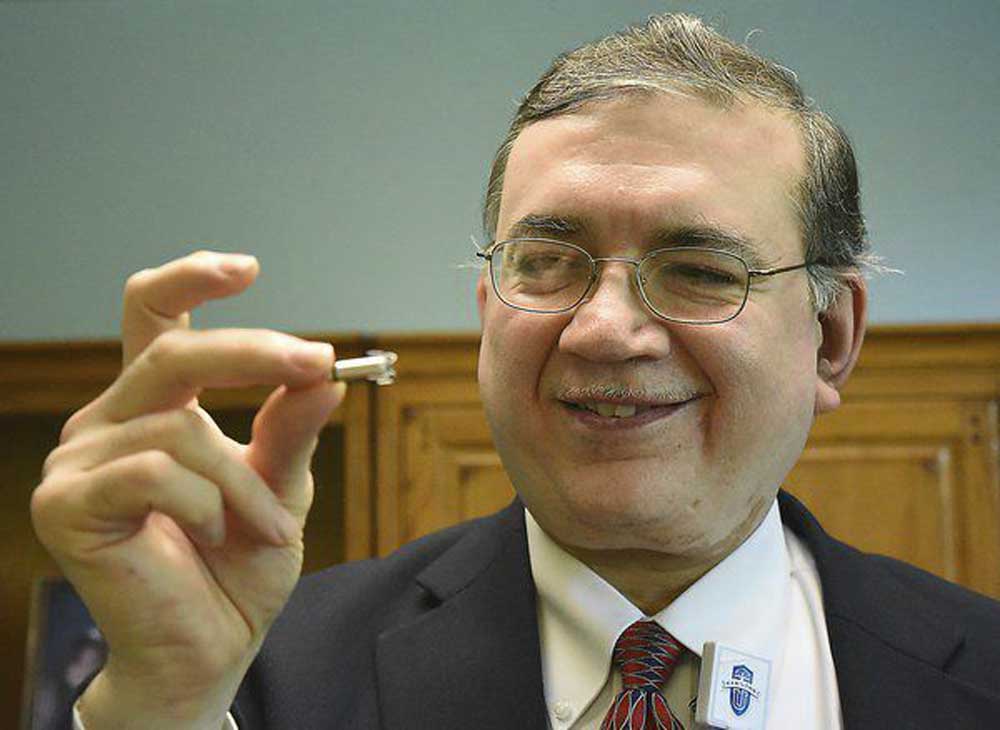Hospital implanting next-generation pacemaker that lasts longer, requires less invasive surgery
Published 11:52 am Wednesday, August 23, 2017

- Dr. Rajiv Verma, a Dalton cardiologist, holds the world's smallest pacemaker.
DALTON, Ga. — It lasts longer, has no wires that can bend and break, and requires a much less invasive surgery.
All in all, says Dr. Rajiv Verma, the latest generation of pacemaker is a huge improvement on previous models. And Hamilton Medical Center is the only hospital north of Atlanta in Georgia implanting the new device.
Trending
Verma, a cardiologist who has been practicing in Dalton for 16 years, recently placed the device — the world’s smallest pacemaker — in a patient in the first surgery of its type at Hamilton and the larger region.
“None of the hospitals in Chattanooga or Knoxville (Tenn.) are doing this,” he said. “We are the first one in the area.”
Verma says the device has a number of advantages over the previous technology.
“Until now, when we implanted a pacemaker, it typically went under the collarbone and introduced a wire from the pacemaker into the heart,” Verma said. “The pacemaker controls the heartbeat through that wire.”
Verma says that wire is “the weakest link” in the system. The wire runs through a vein, and that vein can collapse and close.
“The heart beats almost 100,000 times a day. Each time it moves and contracts, it bends that wire,” he said. “That wire bends several million times a year, and if you bend a wire too much, it can fracture.”
Trending
The new pacemaker does not need a wire.
“It goes directly into the heart,” Verma said. “We use a catheter. It isn’t an invasive surgery. There’s just a small hole that doesn’t even need stitches. It doesn’t leave a scar. The recovery time is much less. There’s less chance of infection.”
Because it doesn’t leave a scar and because there’s no “bulge” under the skin from an implanted device, the new pacemaker is more aesthetically appealing.
“You can go to the beach and wear a swimsuit and no one will know that you have a pacemaker,” Verma said.
The new pacemaker weighs just two grams (0.07 ounces), compared to 28 grams (one ounce) for what was previously the smallest device. Its size is just 0.8 cubic centimeters (0.05 cubic inches), compared to 12.5 cubic centimeters (0.76 cubic inches) for the older model.
“This is a very new technology. It just got approved by the FDA (U.S. Food and Drug Administration),” Verma said. “But what is really amazing is that even though it is so much smaller, its battery is even better. The older one’s battery lasts about 10 years. This one’s battery lasts about 12 years.”
Jeff Hughes, Hamilton’s cardiovascular service line administrator, says heart patients will benefit greatly from having access to this cutting-edge technology.
“Having this technology available at Hamilton will allow eligible patients to have this device placed without leaving the community,” he said. “We are very fortunate to have excellent cardiologists in our community along with state-of-the-art technology at Hamilton Medical Center. We are happy to be the first hospital in the area to offer this technology. We are continually advancing our cardiovascular services in order to bring advanced care to our community.”


